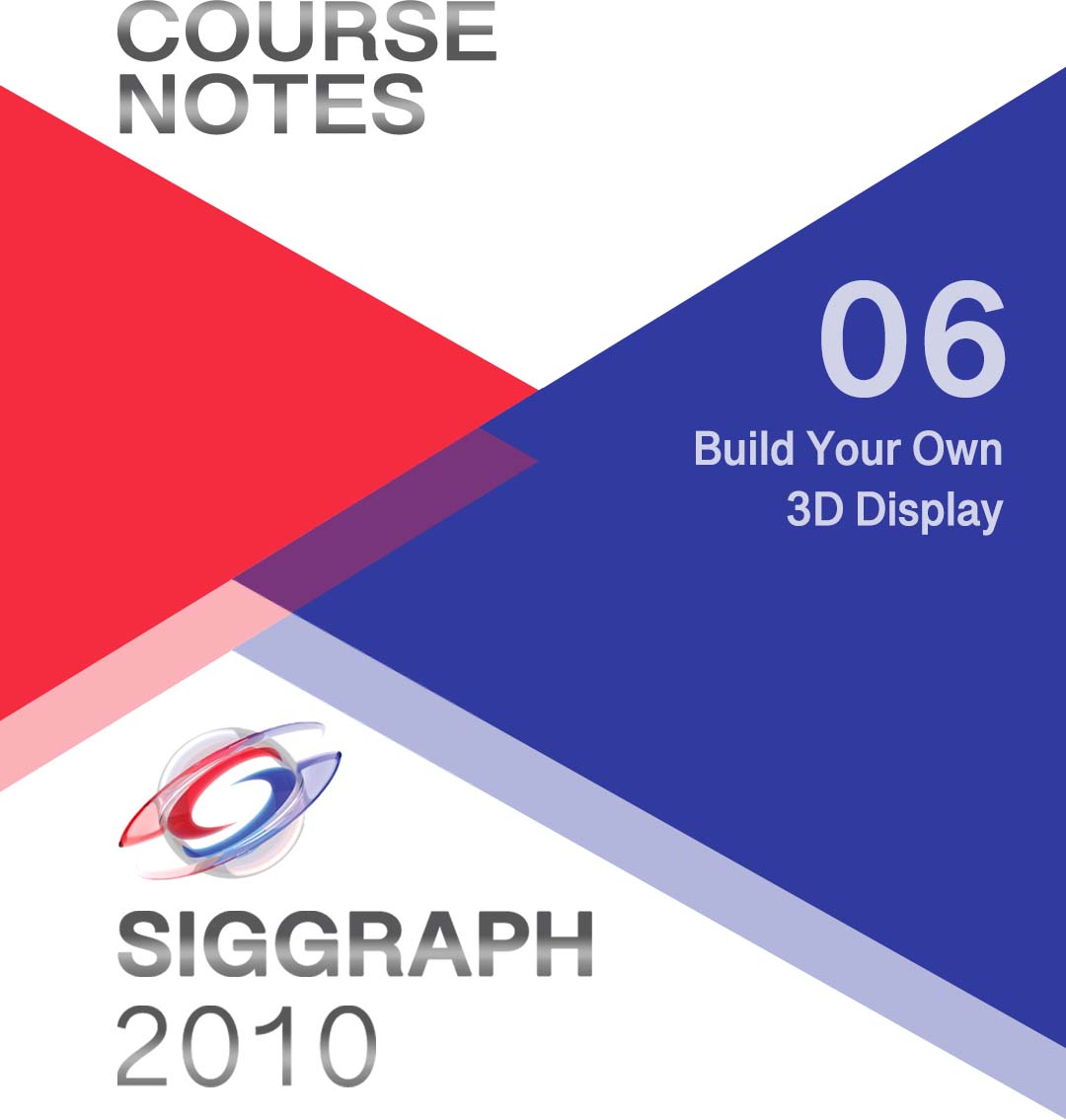“Build Your Own 3D Display” by Hirsch and Lanman
Conference:
Type(s):
Title:
- Build Your Own 3D Display
Organizer(s):
Presenter(s)/Author(s):
Entry Number: 06
Abstract:
Prerequisites
Attendees should have hobbyist-level experience with do-it-yourself electronic projects. While executables are provided for beginners, attendees with prior knowledge of Matlab, C/C++, and OpenGL will be able to directly examine and modify the provided source code.
Abstract
Commercial stereoscopic displays have reemerged in the consumer market within the last few years. Today, film studios routinely produce live-action and animated 3D content for theatrical release. While primarily enabled by the widespread adoption of digital projection, allowing accurate view synchronization, the underlying 3D display technologies have changed little in the last few decades. Theatrical systems rely on stereoscopic display: projecting a unique left/right image pair that is separated by various filters placed within a pair of glasses worn by each viewer. In contrast, several LCD manufactures are introducing automultiscopic displays: allowing view- dependent imagery to be perceived without the aide of special glasses. Given these developments, 3D display is poised for another resurgence. This course is a hands-on introduction to 3D display and provides attendees with the mathematics, software, and practical details necessary to build their own low-cost stereoscopic displays. An example-driven approach is used throughout, with each new concept illustrated using a practical 3D display implemented with off-the-shelf parts. First, glasses-bound stereoscopic displays are explained. Detailed plans are provided for attendees to construct their own LCD shutter glasses. Next, unencumbered automultiscopic displays are explained, including step-by-step directions to construct lenticular and parallax barrier designs using modified LCDs. All the necessary software, including algorithms for rendering and calibration, is provided for each example, allowing attendees to quickly construct 3D displays for their own educational, amusement, and research purposes. The course concludes by describing various methods for capturing, rendering, and viewing various multi-view imagery sources. Stereoscopic OpenGL support is reviewed, as well as methods for ray-tracing multi- view imagery with POV-Ray. Techniques for capturing “live-action” light fields are also outlined. Finally, recent developments are summarized, inspiring attendees to evolve the capabilities of their self-built 3D displays.





